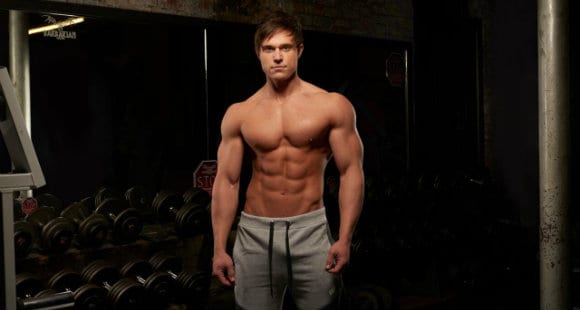By the healthiergang writer , graduated in Food Science and Technology, majoring in Nutrition and Functional Food.
Periodization
La periodization of training understood as an organized and planned distribution of training loads, it has been used for several decades with high and medium-level athletes in order to optimize the process of improving sports performance or to improve its characteristics in terms of body composition.
Technicians and scholars have primarily applied these principles to strength sports (resistance training) using reasoned modulations of the loads according to the competitive commitments.
The concept of periodization in fact identifies planned and cyclical variations of the training parameters in terms of volume, intensity, frequency and density.

The purpose of this organization as mentioned above will be to obtain the maximum result from the stimuli to which the athlete is subjected in training and subsequent recoveries by varying the volume and intensity of the load to favor neuromuscular adaptations by interspersing unloading and recovery phases to avoid the risk of overtraining and to make the peak of physical condition coincide with the most important competitions.
In this first part of the article we will analyze in a completely general way the concept of periodization and the basic models of the same.
General principles
The laws on adaptive responses to stressful agents and subsequently their application to sports training date back to the early / mid-twentieth century when the Russian professor Ludwig Prokop used the concepts related to general adaptation syndrome precisely to explain the reactions of the organism to it.
Precisely on the basis of the fact that the body needs constant stressful stimuli periodic variations of the workloads were introduced to continuously alter the homeostasis of the athlete's organism, avoiding possible plateaus in the improvement process of the same.
The Russian professor Lev Matveev wrote down in his texts published at the end of the 50s the fundamental concepts relating to the periodization of training, putting the four-year Olympic cycle at the apex of the objectives of an athlete and therefore as an organizational model.

In Matveev's writings some important concepts are defined which are still used today when we talk about training periodization, we start from the macrocycle, that is the period that generally consisted of a whole year of training or four for example in the case of the Olympics.
The eventual annual cycle was, and is, then divided into two different moments: one first preparatory phase (several months) and a second competitive phase and consists of a specific preparation for it.
A macrocycle will therefore be divided into mesocycles (2-6 weeks) and in turn into microcycles (1 week).
This model (Matveev) is basically what is now considered the "classic" or "traditional" model in which the training load within the macrocycle reveals a transition from a high volume and low intensity to a high intensity and low volume at the same time. 'approaching the competitive period, as well as within each mesocycle, except for the introductory / preparatory period in which the volume is usually incremental.
Traditional periodization
The "traditional" periodization is also called "wave-like", that is with undulatory trend relative to volume and intensity, but it is also characterized by variations in methodologies not only in the loads used within the mesocycle.
In any case, the targeted adaptations by the program are the consequence of a logical chaining aimed at promoting increases in the athlete's performance and all regenerative processes.
Subsequently, the theories of Metveev were opposed to those of Verkhoshansky who proposed an alternative model defined "in blocks" characterized by training periods with univocal objectives and concentrated loads in order to avoid the condition of excessive fatigue to which the athlete was often led by the great training volumes of traditional periodization.
Block periodization
We also briefly describe the block or conjugate sequence method.
According to Verkhoshansky, the “general” training volume compared to that expected in the traditional model the "special" type should have been decreased and increased at the same time, in particular, the concept of "special strength" was introduced in this period characterized by strength exercises attributable to the technical gesture of the athlete.
This division of content and separation between special and general exercises led precisely to the development of a new programming model that avoided overlapping and reduced the volume of general training.
Block periodization, when applied to strength training, for example, provides for focusing on a single type of force in each block-mesocycle, in order to saturate the possibility of adaptation through very concentrated workloads.
Specifying how the variations of the training contents can still be considerable and frequent in terms of the methodology used and the type of muscle contraction but must have the same goal. This is then modified during the macrocycle, establishing a productive succession between one training stimulus and the other (conjugated sequence).

This model provides cycles of 2-6 weeks with concentrated loads (accumulation mesocycles) and the goals of each block are usually muscle hypertrophy, maximum strength, muscle power.
Therefore, by "saturating" the organism in the possibility of adaptation with univocal loads, you will get a first and momentary "super-compensated" performance loss in the subsequent mesocycles in which new strength contents will be introduced capable of generating a sort of "cumulative" effect of training loads.
While referring back to what was previously mentioned, a second goal will be linked to the concept of "transfer" between special load and competitive performance, in this sense block periodization provides for the gradual abandonment of expressions of strength not strictly related to the specialty practiced by the athlete and the adoption of more specific forms in the realization phases in which the residual effects of the previous phases will be exploited to improve the dynamic and sport-specific expressions of strength bringing the athlete to peak form.
The conjugate sequence periodization it is particularly suitable for advanced athletes in the field of strength sports, even if there are no experimental studies that compare it with the traditional typology proposed by Matveev.
Finally, before moving on to the concept of supercompensation and therefore explaining one of the fundamental aspects of training and nutrition planning for reach the peak of form or simply improve one's performance, let's analyze a last type of programming, of a “non-linear” type and with a diametrically opposite concept compared to the block one: daily / weekly undulating periodization.
This type of periodization provides for variations in the methodologies used and in the content of strength training over the course of the week.
In fact, within each training micro-cycle, different objectives are pursued through strength training.
Introduced in the early 80s to allow the maintenance of a high performance throughout the competitive season of American Football athletes, it included two weekly strength sessions of different character, one aimed at maximum strength and the second at endurance, strength. and hypertrophy.

Subsequently this program has evolved going to be constituted of three different weekly strength workouts (hypertrophy, maximum strength and power in a variable way) inducing a decidedly undulatory trend within the macro and mesocycles with the aim of seeking different physiological adaptations to each training.
Here's an example: some Connecticut University researchers developed a typology of nonlinear periodization built around the athlete's condition right at the time of training ("flexible" approach) by evaluating the state of the athlete before training through tests that do not compromise the subsequent training (throwing medicine balls, long jump from standing ... ).
The absence of monotony that derives from these training programs could find use and be "successful" in sports characterized by a long competitive season, in fitness and rehabilitation (Fleck and Kraemer 1997).
In conclusion
The fundamental concepts relating to the periodization of strength training are now widely spread in the competitive and fitness fields. However, comparative studies between different periodization models or non-periodized programs do not always lead, indeed, rarely to univocal results.
Some studies show how a periodized training compared to a non, leads to more consistent results in terms of increases in maximum strength, others did not show any differences with respect to constant load programs (Hoffman et al. 2009; Baker et al. 1994).
Studies that have instead compared traditional models with DUPs have shown greater effectiveness of the former especially in poorly trained subjects, neophytes while the second has brought more satisfactory results in athletes with a higher level of training (Prestes et al. 2009). Comparisons between traditional and block models do not seem to show significant differences.
The great variability of results reported in the literature testifies to the fact that over an athlete's season there are a myriad of variables at play and that therefore it becomes appropriate to evaluate the overall lifestyle of the same and follow a program that covers the different aspects around the life of the same with particular focus on nutrition, training and recovery / rest.
The second part of this article will in fact focus on a very important aspect by analyzing the concept of supercompensation and the unloading and recovery phase, which is fundamental to maximize the efficiency of an athlete's workouts.


























